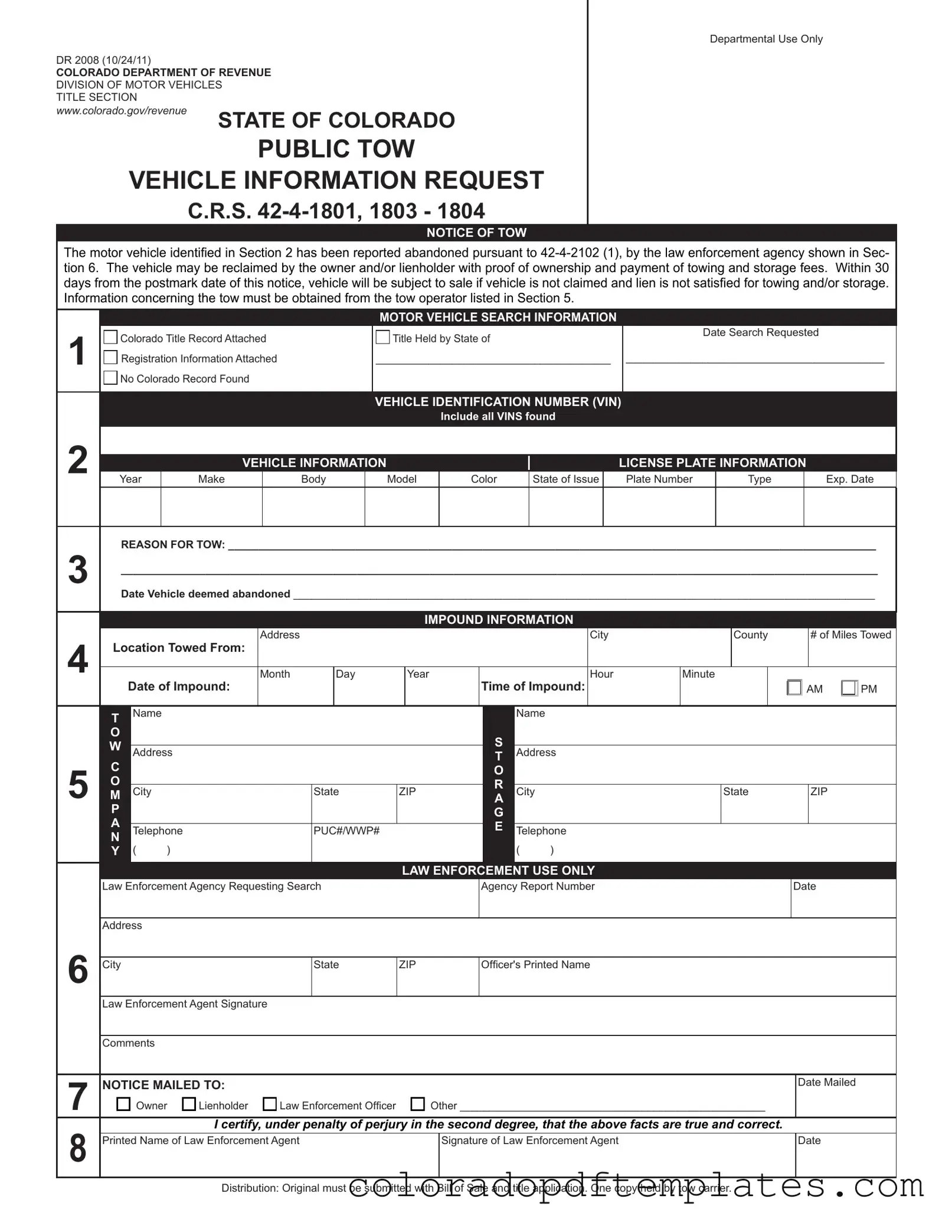Download Colorado Dr Form in PDF
The Colorado DR form is a document used by the Colorado Department of Revenue's Division of Motor Vehicles to manage the process of reporting and reclaiming abandoned vehicles. This form serves as a notification to vehicle owners and lienholders, detailing the necessary steps for reclaiming their vehicles after they have been towed. It outlines important information regarding the vehicle's identification, towing details, and the timeline for reclaiming the vehicle before it may be sold.
Make This Colorado Dr Online
